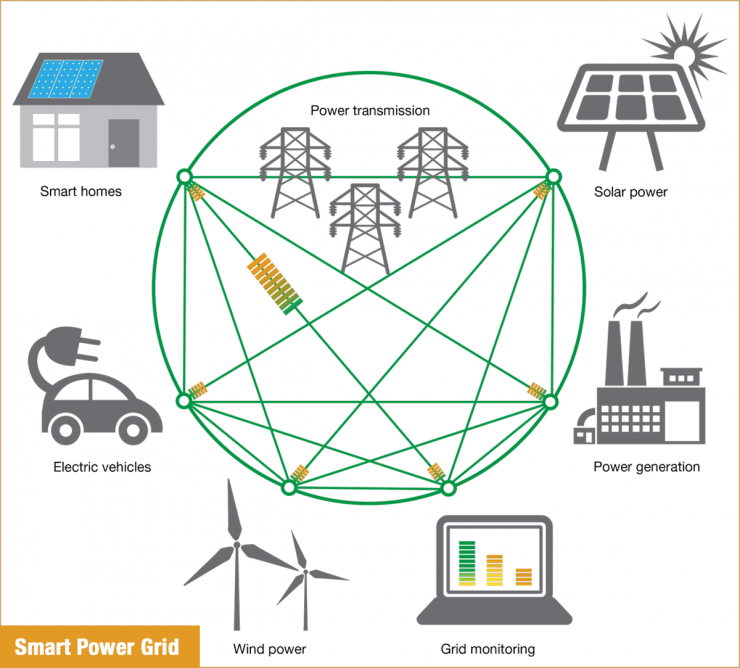Motivation

The penetration of renewable sources of energy in power networks is expected to grow over the next years, motivated by environmental concerns. This poses additional challenges for power networks, since RES are in general volatile and not fully predictable. A large penetration of RES may cause frequent, large deviations between generation and demand, endangering power quality and possibly the stability of the grid.

Controllable demand is considered by many a means to counterbalance generation and demand deviations, due to its potential to provide fast response at urgencies. Thermostatic loads (TLs) comprise a significant portion of the total demand. In particular, a recent survey showed that TLs exceeded 80% and 40% of the total consumption in households with and without electric heating respectively. TLs keep their temperature within two threshold values, switching on and off when those are met. Hence, their power consumption is characterized by a cyclic behavior. TLs can provide support to the power network by disrupting their cycles when an urgency occurs, appropriately switching on and off. Such behavior is appealing since the temperature always remains within the desired threshold values, and hence disruptions have no effect on user comfort. In addition, controlling TLs is viewed as the only practical option to enable ancillary services from household loads as the majority of non-thermostatic appliances (e.g. lighting, audiovisual, information and communication technology) directly affect user utility and are hence difficult to disrupt. Therefore, the design of effective schemes for the control of TLs is of great importance if those are to provide support to the power network.

The use of controllable TLs as ancillary services to the power network, in conjunction with a large penetration of RES will significantly increase the number of active devices in the network making its electromechanical behavior difficult to predict and encouraging research on its stability properties. The inclusion of controllable TLs raises various technical challenges, resulting from their intrinsic cyclic behavior. One such challenge is the possibility that all loads synchronize, simultaneously switching on and off, causing large oscillations to the power network. Furthermore, issues of fairness in power allocation and economic optimality are raised if TLs are controlled to support the power network. Hence, the aim of this project is to design effective and efficient schemes for the control of TLs and provide analytical guarantees that those will enhance the performance of the power network without compromising its stability properties. This will enable to securely incorporate a larger penetration of RES in the power grid, which is currently a global priority (UN Sustainable Development Goals).
Objectives
The primary research objective of this project is the design and analysis of novel schemes to control TLs such that ancillary services are provided to the power grid without compromising its stability properties. The end-scope is to propose suitable schemes for the control of TLs that will allow them to provide secure and efficient support to the power network. In particular, we aim to satisfy the following objectives.
(i) Design schemes to control TLs to provide effective ancillary support to the power network. Explore means to control TLs cycles such that a portion switches off when there is a lack of power, providing support to the power network at urgencies. We aim to extend the state of the art by considering deterministic schemes for the control of TLs, since those allow a faster response at urgencies. Furthermore, we aim to evaluate the impact of such control schemes on the power network and explore how those should be designed given the characteristics of loads (magnitude, location) and the power network (inertia, damping, dynamics).
(ii) Design schemes to control TLs to achieve economic optimality with minimum user disruption. Design control schemes for TLs that suitably adjust load cycles in order to minimize the power allocation cost, taking into account operational constraints of the power network. To ensure minimum user disruption, such schemes will keep local temperatures close to the desired temperature, set by the user, at all times. We aim to explore the feasibility and potential trade-offs of simultaneously achieving economic optimality and provide ancillary services to the power network. This will allow the efficient operation of TLs and save cost in the power network operation.
(iii) Provide power network stability guarantees. Consider how the combination of currently implemented generation dynamics and suitably controlled TLs affect the electromechanical behavior of the power grid. Provide guarantees that applying the control schemes for TLs that satisfy the objectives (i) and (ii) will not compromise the stability properties of the power network. This will enhance the reliability of the power network performance when such schemes are implemented, enabling the practical incorporation of controllable TLs.